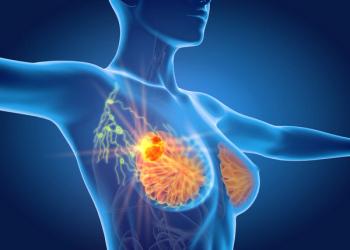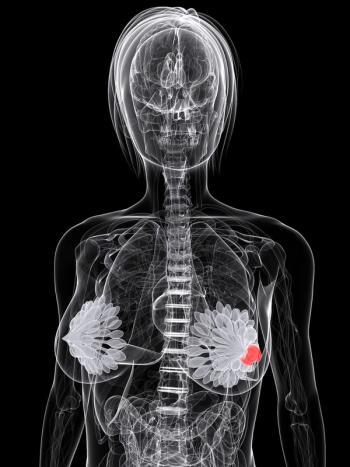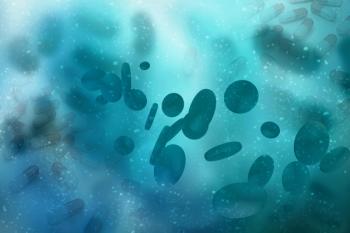
ASCT Shows No Significant MRD Difference vs Isa-KRd in Multiple Myeloma
Longer follow-up from the phase 3 MIDAS trial may be necessary to evaluate progression-free survival and overall survival.
The rate of premaintenance minimal residual disease (MRD) negativity at 10−6 sensitivity was not significantly higher with autologous stem cell transplantation (ASCT) vs isatuximab-irfc (Sarclisa) plus carfilzomib (Kyprolis), lenalidomide (Revlimid), and dexamethasone (Isa-KRd) among those with newly diagnosed multiple myeloma, according to findings from the phase 3 MIDAS trial (NCT04934475) published in the New England Journal of Medicine.1
Of 485 patients who achieved MRD negativity at 10−5 sensitivity following induction therapy, 86% who received ASCT and 84% who received Isa-KRd experienced MRD-negative status at 10−6 sensitivity before maintenance therapy (adjusted relative risk, 1.02; 95% CI, 0.95-1.10; P = .64). Additionally, 73% and 76% of patients from each respective group achieved MRD negativity at 10−6 sensitivity following induction therapy.
Of those with MRD-positive status at 10−5 sensitivity at the end of induction therapy, MRD negativity at 10−6 sensitivity occurred in 32% of those who received tandem ASCT vs 40% of those who underwent single ASCT (adjusted relative risk, 0.82; 95% CI, 0.58-1.15; P = .31). A total of 61% and 67% of patients from each respective group experienced conversion to MRD-negative status at 10−5 sensitivity before beginning maintenance therapy.
Based on International Myeloma Working Group (IMWG) criteria, a very good partial response (VGPR) or better occurred in 93% of the ASCT arm vs 93% of the Isa-KRd arm (adjusted relative risk, 1.00; 95% CI, 0.95-1.05), with complete responses (CRs) reported in 17% and 16%, respectively (adjusted relative risk, 1.06; 95% CI, 0.72-1.58). In the tandem ASCT and single ASCT groups, 85% and 96% had VGPRs or better (adjusted relative risk, 0.89; 95% CI, 0.82-0.97) and 19% vs 16% experienced CRs (adjusted relative risk, 1.25; 95% CI, 0.71-2.20).
“This phase 3 randomized trial showed that in patients with a postinduction MRD-negative status at 10−5 sensitivity, consolidation therapy with ASCT as compared with Isa-KRd alone did not lead to a significant difference in the percentage of patients who [had] MRD-negative [status] at 10−6 sensitivity before maintenance therapy,” lead study author Aurore Perrot, MD, PhD, of Service Hématologie at Hôpital Universitaire de Toulouse Oncopole at Université de Toulouse in France, wrote with coauthors.1 “Our trial also showed a lack of benefit of tandem ASCT over single ASCT with respect to an MRD-negative status at 10−6 sensitivity before maintenance therapy in patients who [had] MRD-positive [status] at 10−5 sensitivity after induction. Our trial is ongoing, and longer follow-up is needed to assess progression-free survival [PFS] and overall survival [OS].”
In the MIDAS trial, patients with MRD-negative status at 10−5 sensitivity were assigned to receive ASCT plus Isa-KRd for 2 cycles in the ASCT group (n = 242) or receive Isa-KRd for 6 cycles in the Isa-KRd group (n = 243). Additionally, those with MRD positivity at 10−5 sensitivity were assigned to undergo 2 ASCTs within a short period in the tandem ASCT group (n = 124) or receive ASCT plus Isa-KRd for 2 cycles in the single ASCT group (n = 109).
The trial’s primary end point was MRD negativity at 10−6 sensitivity prior to maintenance therapy. Secondary end points included MRD negativity at 10−6 sensitivity following induction therapy, responses per IMWG criteria, PFS, OS, and safety.
Patients aged 18 to 66 years with documented multiple myeloma fulfilling the calcium elevation, renal insufficiency, anemia, and bone lesions criteria and with measurable disease who were suitable to receive high-dose therapy and ASCT were eligible for enrollment in the trial.2 Other eligibility criteria included having a Karnofsky performance status of 50% or higher and adequate pretreatment clinical laboratory values.
Across the ASCT, Isa-KRd, tandem ASCT, and single ASCT groups, anywhere from 53% to 60% of patients were men, 85% to 92% had an ECOG performance status of 0 or 1, 86% to 92% had International Staging System stage 0 or 1 disease, and 23% to 27% had gained 1q TP53 mutations. Investigators used flow cytometry as a fallback to next-generation sequencing in 16 patients at the end of induction therapy and in 12 patients prior to beginning maintenance treatment.
Investigators reported disease progression in 5 patients—including 2 in the Isa-KRd group and 3 in the tandem ASCT group—during the consolidation phase as well as 2 deaths unrelated to progressive disease among those who received Isa-KRd. After a median follow-up of 16.8 months and 16.3 months in the ASCT and Isa-KRd groups and tandem and single ASCT groups, respectively, data on MRD-negative status and PFS had not yet reached maturity.
Data showed no new safety signals during the study’s consolidation phase compared with the induction phase. Of note, grade 3 or higher mucosal inflammation and stomatitis affected 12% and 14% of patients in the tandem ASCT group, respectively.
Investigators noted 2 deaths during the consolidation phase, both of which occurred in the Isa-KRd group during the first treatment cycle. One death was attributable to ischemic stroke, and the other occurred due to an unknown cause without progressive disease.
References
- Perrot A, Lambert J, Hulin C, et al. Measurable residual disease-guided therapy in newly diagnosed myeloma. N Engl J Med. Published online June 3, 2025. doi:10.1056/NEJMoa2505133
- Minimal residual disease adapted strategy (MIDAS). ClinicalTrials.gov. Updated November 7, 2024. Accessed July 8, 2025. https://tinyurl.com/2ufefmex
Newsletter
Stay up to date on recent advances in the multidisciplinary approach to cancer.
















































































